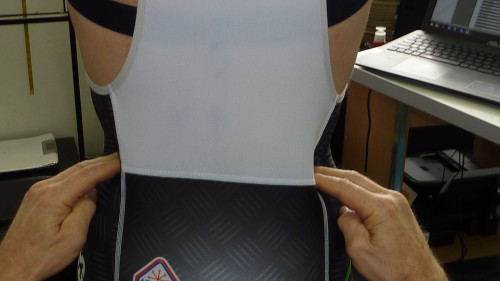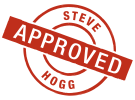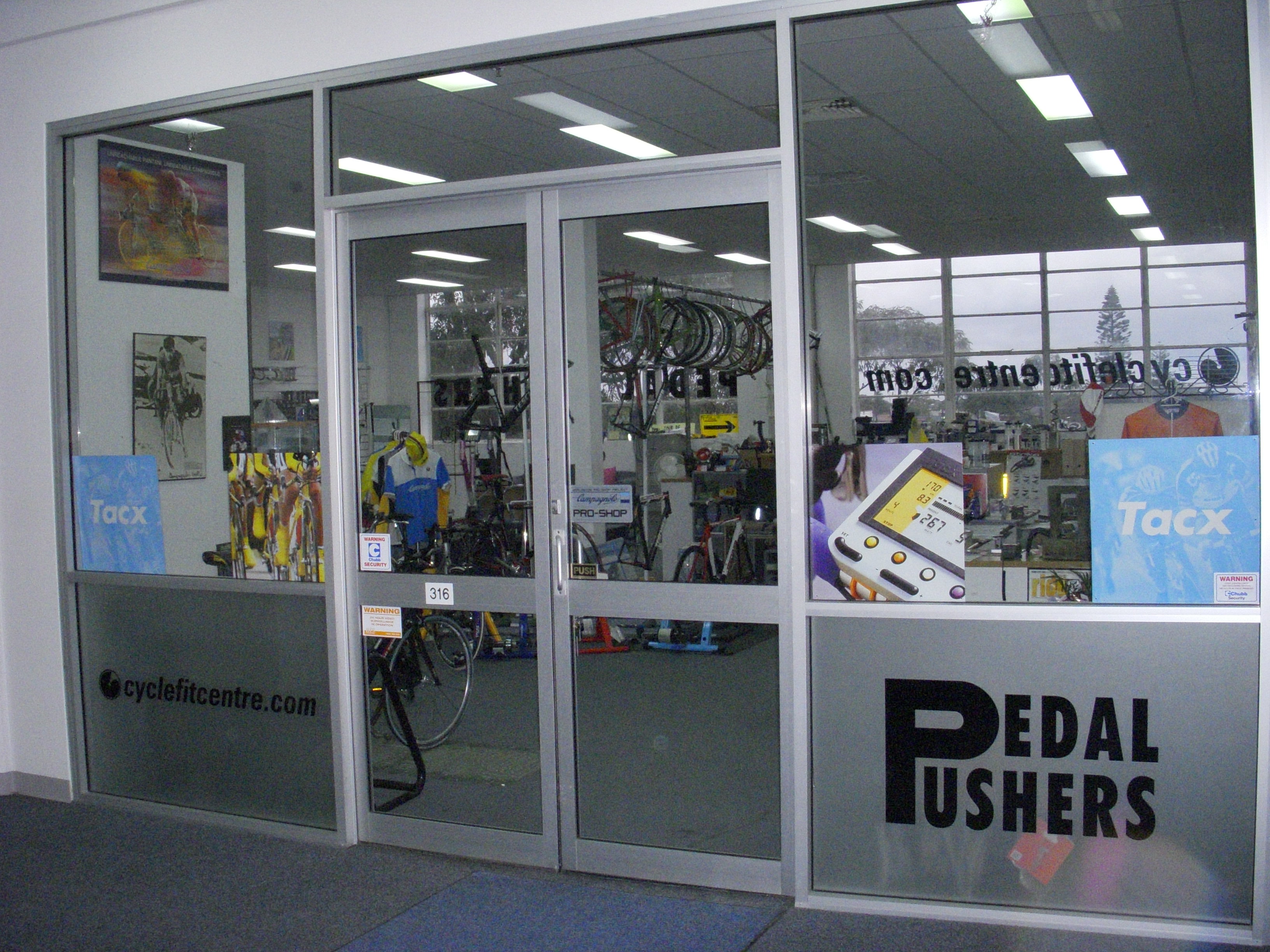By Steve Hogg
This is the first of what will be a regular Fit of the Month series which will illustrate how a team of like minded fitters have tackled particular bike fitting issues. Some FotM’s will highlight difficult cases while some will be more run of the mill to illustrate a particular bike fitting point or principle. I ask for your indulgence with this first one because all but one of the pics taken for this post turned out to be unsuitable for one reason or another. I’ll only say that the helpful onlooker who took the pics is in contention for the World’s Worst Photographer Award. The lesson I’ve learned from this is that I should take the photos next time. In future FotM’s there will be more pics and video footage.
Our Rider: “M”
32 years of age, 178 cm / 5’10” tall and weighs 67.5 kg / 148 lbs/ 10 stone 8 lbs. Has ridden at national elite level on the road for 10 years with some success, but retired from elite road cycling 4 years ago to concentrate on other areas of his now married life. “M” has since been bitten by the Mtb XC racing bug and starting racing the national endurance series 2 years ago . Fitness was not a problem but “M”s off road skills were non existent. “M” has spent two years doing concentrated skills training with an mtb skills coach making a strength of this previous technical weakness. “M” is now a fully sponsored rider for a major brand . He brought both road and mountain bikes for fitting. “M” stretches for 2 – 3 hours weekly and spends 18 – 20 hours weekly training on both road or mtb. He runs and as a teen, was a competitive swimmer.
Reasons for seeking help:
“M” told me initially that he had no issues of pain or discomfort on either bike at all; that the visit was a tick the box exercise to ensure that he was as efficient as possible. Under closer questioning this changed to “Well my lower back does hurt, but I can handle it and that’s normal anyway; isn’t it?” and was surprised when I replied that lower back pain is never ‘normal’ on a bike. It also came out that he felt like he produced good power but a lot of the time didn’t feel like all of that power made it to the rear wheel. When this occurred, his left leg felt “shaky”. This had always been the case and to him was ‘normal’.
Off Bike Assessment:
“M” is much better than I’m used to seeing functionally, but not perfect. He has long legs and arms and a short torso relative to his height.
Major strengths:
- Stable arches under load
- Excellent sacro iliac joint mobility
- Good hip flexor flexibility
- Excellent hip flexion and external rotation
- Good lower back mobility
- Excellent stability with any challenge I put to him.
Major weaknesses:
- Flexed posture with poor ability to extend the spine
- Ridiculously tight hamstrings (“They’ve always been like this”) when compared to his overall generally superior flexibility
- A fairly serious lateral pelvic tilt of around 20 mm (see below) but no evidence of a difference in leg length

- Marginal ability to internally rotate both hips
- The common right side pattern of proprioceptive deficits that each of our team are used to seeing.
- Left foot 1 full shoe size larger than right foot. “M” is left footed. It is normal for a left footed rider to have a slightly longer right foot, not a longer left foot like “M”s. Half a shoe size longer for the non kicking foot is typical and normal. This comes about because we tend to stand more often on our ‘supporting leg’ as we grow and develop than we do on our “kicking”leg as it is the one that we kick with or use for any task requiring greater coordination that we possess with our non “kicking” leg. Bearing weight off the centre line on the supporting leg more often than on the kicking leg causes the arch of the foot of the supporting leg to drop slightly which lengthens the foot a touch compared to the other side. “M” had a full size difference on the atypical facile leg, not the typical supporting leg. I can only speculate about the reasons for this but several clues were apparent in his foot callous pattern, coupled with the large lateral pelvic tilt lead me to think that his pelvis has been tilted for a long, long time with the left foot falling further and hitting hard during each walking or running step. Functioning asymmetrically like this as a child probably led to the atypical size difference between feet. One thing I need to keep in mind during the on bike assessment is that a significant difference in foot length can functionally increase the length of the leg with the longer foot.
Off Bike Corrections:
- Lateral pelvic tilt resolved using our proprietary method.
- Proprioceptive deficits resolved and “M” given the tools to keep himself this way.
- Painless psoas release on the slightly tighter right psoas
- A number of effective hamstring stretches and spinal extension stretches prescribed for future use. It transpires that “M”‘s wife is a yoga teacher but “M” had never taken advantage of her services! He tells me he is going to have to live down a large number of “I told you so”s from his wife once he returns home.
On Bike Assessment: Major strengths and weaknesses were very similar on both road and mtb-
Weaknesses:
- Left foot a full shoe size larger than right foot but with the same cleat placement on the soles of the shoes. This meant that both feet had differing amounts of foot over the pedal.
- Cleat position very poor. Size 42 mtb and road shoes with the centre of the ball of the foot over the pedal axle on the larger left foot and 5 mm behind the pedal axle on the smaller right foot.
- Too much seat setback. When combined with his flexed general posture this meant that “M”‘s lower back is heavily loaded.
- Sits with right hip slightly forward
- Over enlistment of both psoas (probably to brace his heavily loaded lumbar spine) during the pedal down stroke
- Both glutes firing adequately only, and a bit doughy when palpated
- Left shoulder moderately thrust forward
- Extreme toe down pedaling technique
- Pedaling fluency only adequate
- Too much upper body tension. Not extreme, but not relaxed either
- On seat stability barely adequate
Strengths:
- “M” has been riding at a high level for a long time and somehow or other is making his poor position work reasonably well. In other words, he’s a high level compensator
- Good engine when pressed under load
- Despite poor ability to internally rotate both hips, a low torso position on the bike presented no problems for knee tracking.
On Bike Corrections: We use a ‘Worst First” principle when it comes to tackling on bike issues. In “M”s case this meant……….
- Because “M” has super tight hamstrings his seat height is low relative to his leg length. I had no problem with that because any attempt to raise it to a more “normal’ height caused his on seat stability and pedaling action to deteriorate. What was painfully obvious is that his seat needed to move forward and it did on both bikes (road 17 mm / mtb 20 mm). Decreasing seat setback reduced lumbar flexion and increased his ability to rotate the pelvis forward. It also allowed “M” to more comfortably extend his spine more. This resulted in better breathing efficiency and better on seat pelvic stability.
- Left cleat moved back 12 mm and right cleat moved back 17 mm to give a cleat position of BOFOPA + 12 mm on both feet in both sets of shoes. I needed to redrill his Bontrager road shoes (Bontragers have a more forward placement of their cleat mounting holes on their road shoes compared to many other brands) and fit new threaded eyelets. This change in cleat position instantly caused “M” to moderate his pedaling technique from extremely toe down under load to slightly toe down under load. Normally this would require a drop in seat height to off set the greater leg extension that results from an increased tendency to drop the heel, but the large forward shift of the seat position had fortuitously taken care of this on both bikes.
- Road bike bar and stem position unchanged. Mtb bar position rotated, brake and shift levers repositioned and stem changed from an 80 / – 6 degrees to a 90 mm / -17 degrees to allow him to extend his spine further. This change in stem angle dropped “M”s mtb bars 15 mm.
- Standard shoe insoles removed and Sof Sole High Arch insoles fitted on both sides.
- 1 Heel wedge fitted to left road shoe and 2 cleat wedges fitted to right road shoe based on “M” responses to our testing method.
- 1 Heel wedge fitted to left mtb shoe and 1 cleat wedge and 1 inshoe wedge fitted to right mtb shoe. The difference in wedging between right road and right mtb shoes is because more than 1 cleat wedge under a 2 bolt mtb cleat is rarely secure. The nett effect of inshoe and cleat wedges is the same for both sets of shoes. This was also checked with our patented testing procedure.
“M” has been back on his home trails and roads for a while now and tells me that he pedals more smoothly, is better able to sustain power and that his lower back doesn’t bother him any more. So all in all a good result. “M” is aiming at a podium place in the elite XC Nationals and I wish him well.
“M” was not a difficult case, but I derive a lot of pleasure from the challenge of helping to improve the performance of riders who are already at sharp end of the field.



